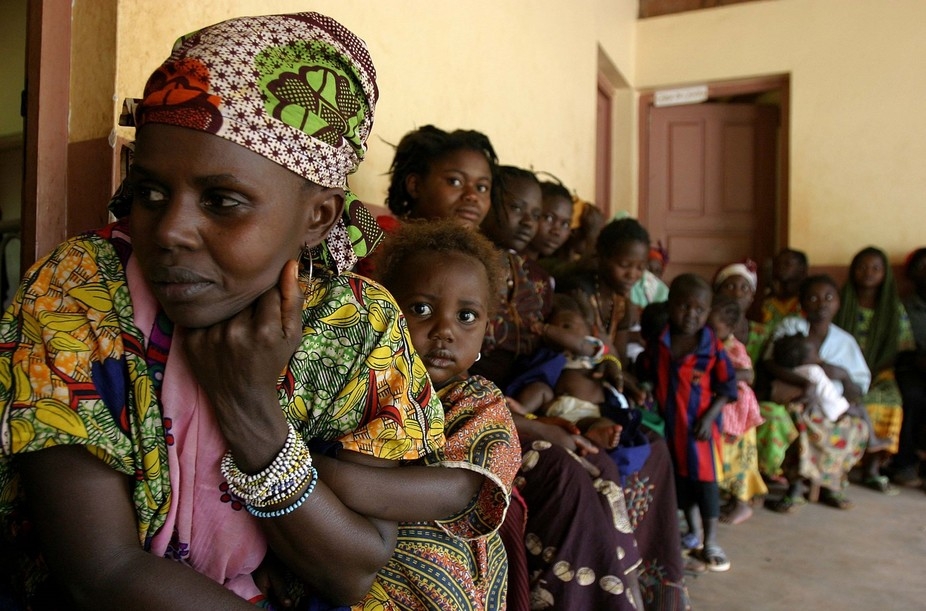In September 2015 the United Nations General Assembly set the global development agenda for the next 15 years. The adoption of the new sustainable development goals included a range of targets to tackle the world’s health challenges.
As part of the Global Burden of Disease Study collaborative network we conducted research into what progress had been made towards the goals in 188 countries. To do this we developed an index built around the agreed goals and their targets.
The bottom line is that, with a few rare exceptions, Africa’s performance has been abysmal. Not a single African country featured among the top 10 countries that are making significant progress towards the sustainable development goals. And of the 10 countries at the bottom of the list, nine are on the African continent.
There are many lessons African countries will need to learn from countries that have performed well if they have any hope of attaining the sustainable development goal (SDG) targets by 2030.
And there is an urgent need to accelerate the pace of progress if the goals are to become a reality.
Analysing the goals and measuring the targets
A total of 17 sustainable development goals, along with their 169 targets and 230 indicators, were adopted at the United Nations summit on sustainable development with a deadline of 2030.
The goals replaced the millennium development goals which expired in 2015.
Goal three specifically relates to health and tackles maternal and child mortality, non-communicable diseases, universal health coverage and mental health. Ambitious targets were also set to end the epidemics of HIV, TB and malaria by 2030. These three are Africa’s top infectious disease killers.
In addition to goal three, 10 of the other 16 sustainable development goals have health-related targets. This includes, for example, reducing poverty (goal one) and helping people to access clean water and sanitation (goal six).
Using the SDG targets as the baseline to analyse data from 188 countries we looked at how much progress each country had made to achieve the new targets. We used data collected between 2000 and 2015. Each country was allocated an overall SDG index score.
The index was created by scoring each of the 33 health-related SDG indicators and then combining them and giving a single value on a scale of zero to 100. The change in this score from year to year shows whether a country is progressing toward achieving SDG targets.
It is the first time the index is being used. Iceland scored the highest on the index, tallying 85.
More work is needed in Africa
Of the ten countries at the bottom of the list that failed to make significant progress in achieving the health-related SDG targets, nine are African.
The Central African Republic scored the lowest, with 20, followed by Somalia and South Sudan with 22. South Africa is 10th on the continent with an SDG index score of 46.
The top performing African country in the full list was the Seychelles. It came in at number 40 in the world with a score of 71.
The worst performing African countries have not managed to reduce maternal or child mortality or malaria. They have also failed to make advances in improving household air pollution or making more safe water available.
What was noticeable about the 10 worst performing nations was that all had experienced civil unrest, mostly because of political instability. Civil conflicts result in mass migration of people, low economic development, hunger and poor access to health services.
If these countries are to meet the sustainable development goals they will need to act decisively in reducing conflicts and implementing evidence-based interventions for improving the poor indicators.
But it’s not all doom and gloom. Some countries have made progress.
Where there’s been progress
Kenya and Ethiopia’s scores increased between 2000 and 2015.
Kenya moved from an SDG index score of 33 in 2000 to 40 in 2015. What is significant for Kenya is that in this time the prevalence of childhood stunting reduced from 39% to 26% in 2015. This was driven by more than doubling access to health services. In 2000 only 32% of Kenyans who needed an essential health intervention could get it. This had increased to 70% by 2015.
In Ethiopia, the prevalence of childhood stunting dropped from 57% in 2000 to 41% in 2015. These improvements happened at a time when the country was able to increase funding for child and newborn health services, growing from US$ 13 million in 2000 to US$ 190 million in 2013. That’s a 14-fold increase.
In addition to the significant improvement in childhood stunting and increased access to health care services, many African countries also made progress in reducing maternal and childhood mortality.
Changing the trajectory
The analysis of these indicators suggests that substantial change is needed in the current trajectory.
It will require major technological leaps coupled with universal delivery, increased funding. Most importantly it will take political will from governments.
In the words of Professor Stephen Lim of the Institute for Health Metrics and Evaluation:
We have concrete examples of countries making important progress on a range of health-related SDG indicators. We now need to look to those countries that have seen strong progress to find out what they are doing right and how it can be applied more broadly.
 The authors do not work for, consult, own shares in or receive funding from any company or organization that would benefit from this article, and have disclosed no relevant affiliations beyond the academic appointment above.
The authors do not work for, consult, own shares in or receive funding from any company or organization that would benefit from this article, and have disclosed no relevant affiliations beyond the academic appointment above.
This article was originally published on The Conversation. Read the original article.




 EU enlargement: What does the future hold?
EU enlargement: What does the future hold?  Death doulas: helping people at the end of their life
Death doulas: helping people at the end of their life  Snakebites: we thought we’d created a winning new antivenom but then it flopped. Why that turned out to be a good thing
Snakebites: we thought we’d created a winning new antivenom but then it flopped. Why that turned out to be a good thing  An Israeli attack on Iran’s nuclear weapons programme is unlikely – here’s why
An Israeli attack on Iran’s nuclear weapons programme is unlikely – here’s why  Surgery won’t fix my chronic back pain, so what will?
Surgery won’t fix my chronic back pain, so what will?  Video games at work? It sounds fun, but there are ethical risks
Video games at work? It sounds fun, but there are ethical risks  How to look after your mental health while packing up Mum or Dad’s home
How to look after your mental health while packing up Mum or Dad’s home  Type 2 diabetes is not one-size-fits-all: Subtypes affect complications and treatment options
Type 2 diabetes is not one-size-fits-all: Subtypes affect complications and treatment options  Personalized cancer treatments based on testing drugs quickly leads to faster treatment, better outcomes
Personalized cancer treatments based on testing drugs quickly leads to faster treatment, better outcomes  Study links microplastics with human health problems – but there’s still a lot we don’t know
Study links microplastics with human health problems – but there’s still a lot we don’t know  An apple cider vinegar drink a day? New study shows it might help weight loss
An apple cider vinegar drink a day? New study shows it might help weight loss  Honey is said to help with hay fever symptoms – here’s what the research says about this claim
Honey is said to help with hay fever symptoms – here’s what the research says about this claim  The Atlantic diet: how it compares to its Mediterranean counterpart – and what benefits it might have
The Atlantic diet: how it compares to its Mediterranean counterpart – and what benefits it might have  Proteins in milk and blood could one day let doctors detect breast cancer earlier – and save lives
Proteins in milk and blood could one day let doctors detect breast cancer earlier – and save lives  Could ADHD drugs reduce the risk of early death? Unpacking the findings from a new Swedish study
Could ADHD drugs reduce the risk of early death? Unpacking the findings from a new Swedish study 

































